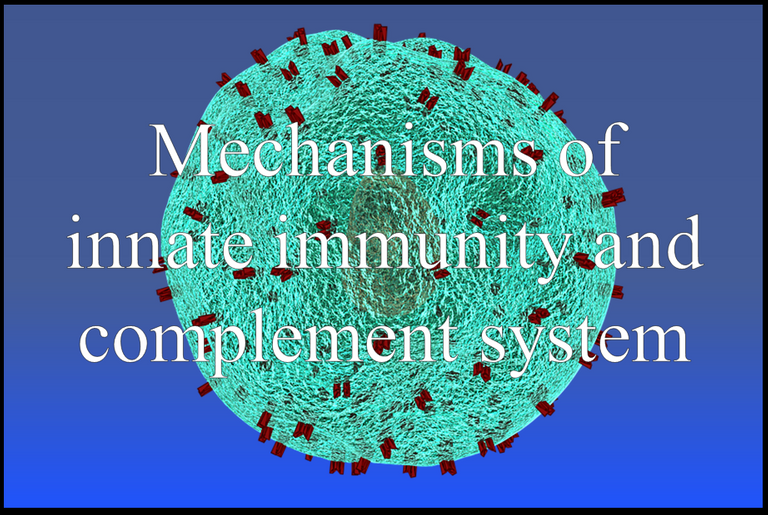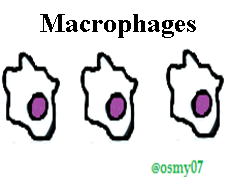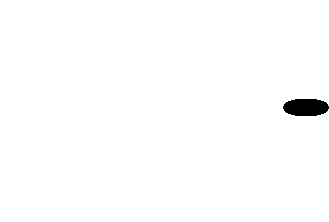
Hey there my dear readers, this time the main topic will remain immunology; In my previous publication "Introduction to immunology", as its title indicates, I wrote about its generalities, but today we will delve a little more into what this beautiful part of medicine is, we will specifically focus on innate immunity and the complement system.
Innate Immunity:
Basically is the type of immunity that we acquire genetically whose action is immediate, it is the one that participates first in the presence of a microorganism, and always acts in the same way even if the response is effective or not. It has no immunological memory but precedes acquired immunity. This one use the alternate complement pathway and use the acute phase response.
The cellular mechanism of innate immunity uses phagocytes, which are specialized cells that have the ability to recognize microorganisms, and then mobilize them inside to destroy it. It also helps through natural killer cells.
Types of phagocytes:
- Macrophages
- Polymorphonuclear leukocytes (neutrophils, eosinophils).
These cells recognize the external agents through opsonizing proteins placed in said pathogen, then introduces it to its interior, and then phagocytosis occurs.
What is phagocytosis?
It is the process by which phagocytes eliminate pathogenic microorganisms; In summary, this process begins when the polymorphonuclear leukocyte (PMN) comes into contact with the pathogen's membrane and then introduces it into a vacuole called phagosome.
PMN has a Golgi apparatus inside which secretes lysosomes and in turn the lysosome will contact the phagosome and originate what is called phagolysosome.
Already formed the phagolysosome, secretes a series of substances which eliminate bacteria, generating what is called the digestive vacuole, once everything is destroyed the residual body is formed and by exocytosis they eliminate the remains of the bacteria.

Image elaborated by me.
Macrophages:
They parcipate in the phagocytosis process in innate immunity, they are important in the inflammation process, and because of cytotoxicity, because they can act through antibodies, macrophages secrete cytokines that are the language of the immune system. They are found in blood as monocytes, and in tissues such as macrophages.
Acute phase response: macrophages in the phagocytosis process may recognize the microorganism, but they are also able to activate complement proteins if they don't recognize it by themselves through immunoglobulins (Ig), that is, they recognize it by itself or they may need help.

Image elaborated by me.
NK or natural killer cells:
They are a type of lymphocyte that has an innate cytolytic capacity. They are capable of eliminating microorganisms from innate immunity, recognize tumor cells, and recognize intracellular microorganisms, for example viruses.
The NK recognize a cell infected with cellular microorganisms because a healthy cell without microorganisms has on its surface the major histocompatibility complex class I (MHC I), but when the cell is infected it loses that complex and there the NK recognize them. The NKs eliminate these cells by cytolysis (breaks the cell) through the release of perforins, and by apoptosis (programmed cell death) through the granzymes.
Cytokines, interleukins:
They are low molecular weight proteins synthesized by the immune system in the presence of foreign elements, the cells of the immune system begin to secrete cytokines so that other cells go to that site, it is a communication mechanism.
In the acute phase response, the general response of the body to an infection is promoted by interleukin 1 and 6, that is, it is a first-hand response, when these interleukins are secreted, it is trying to make the polymorphonuclear macrophages go to the site of infection, then stimulates the hypothalamus to produce fever (natural process of innate immunity) while other cells arrive at the site. When the body increases the temperature it does so trying to eliminate the microorganism through the acute phase response.
Complement system:
The complement system is responsible for eliminating certain extracellular microorganisms and those with capsule (the capsule makes it difficult for phagocytic cells to recognize them).
Once activated, the complement seeks to position itself around the microorganism that it wants to destroy and causes lysis, it is also an important mechanism in the fixation process.
The complement consists of a set of approximately 26 proteins that are activated sequentially by the presence of microorganisms or parts of the wall of them.
Activation of the complement seeks to alter the structure and functioning of the microorganism's membrane. It has a regulation system, which is activated through proteases and inactivated by complement regulatory proteins.
Complement Functions:
- Promote inflammation of the area where the element to be removed is.
- Chemotaxis (attract the infectious focus).
- Increases the efficacy of phagocytosis by promoting the opsonization of microorganisms.
- Destruction of microorganisms by rupture of the inner membrane (lysis).
Complement system has 3 routes:

Image elaborated by me.
Activation of the complement indistinctly from the pathways is due to proteases that hydrolyse (activate) the complement proteins; so that they can be activated they have to be divided. Example: C3 alone is inactive, when it is hydrolyzed to C3a and C3b, they become active.
The 3 pathways have in common the lytic phase or membrane attack complex (MAC) from C5 to C9.
In general, the complement system is like a series of locks and keys, I mean, a key opens a lock which forms another key that opens another lock and so on.
Classical pathway:
It corresponds to the acquired immunity, it is activated by the antigen-antibody interaction. The first protein that is activated is C1 (exactly the C1q fraction). It acts in later stages of the infectious process since it requires an adequate level of specific antibodies.
The first protein to be contacted is C1 which is divided into C1q, C1r and C1s, the C1q fraction is the first to be activated, it then activates at C1r and is at C1s.
C1 in general lines activates C4 which is circulating inactively. Already active C4 is divided into C4b that remains in the cascade and C4a that goes into circulation to perform other functions. C4b joins C2 and forms C4bC2, when C2 is activated it divides in turn into C2a that will do other functions and C2b that follows in the cascade and forms C4b2b which is the convertase of C3, then C3 is divided into C3a which is goes, and C3b that joins forming the C5 convertase which would be C4b2b3b by the classical route.

Classical complement pathway. Image elaborated by me.
Alternative pathway:
Represents innate immunity. It is activated because it recognizes the direct structure of the microorganism. The complement protein binds directly to the microorganism, doesn't need antigen-antibody interaction.
It begins with the activation of C3, acts in early stages of the infectious process, stages in which our body has not yet managed to produce adequate levels of specific antibodies.
The first protein to be activated is C3, then C3a is formed that performs other functions and C3b remains which binds to factor B and C3bB is produced. Still the factor B has not been activated since on it will act the factor D that will be the one that activates it by dividing it into factor Ba that goes and Bb that stays. In the end, C3bBb will be formed which can activate other C3 to amplify the response because many C5s will be placed on top of the microorganism that is to be eliminated, so in order to have many C5 many cascades must be activated simultaneously.
Convertase that activates C5 to initiate the membrane attack complex by the alternating route is C3bBb.

Alternative complement pathway. Image elaborated by me.
It is identical to that of the classical pathway but this pathway is activated by the colectinas (opsonizing proteins), here the mannose fixing protein and the lipopolysaccharide fixing protein are passed through a C1.

Lectin Parthway. Image elaborated by me.
Membrane attack complex:
It is common for the 3 routes explained above, corresponds to the final complement pathway, producing lysis of the attacking pathogen, goes from C5 to C9; once C5 is activated it will be divided into C5a that will perform other functions and C5b remains in the cascade (first protein of these elements that is positioned on the microorganism to be eliminated).
C5b will join C6 forming C5b6, it will join 7 forming C5b67 which joins 8 and form C5b67y8, and finally these 4 join 9 forming C5b678y9, so the membrane attack complex is nothing more than C5b6789 which is what will produce pores or gaps at the level of the membrane of that microorganism to cause the outbreak (lysis).

Membrane attack complex. Image elaborated by me.
Complement proteins besides than cascades have other functions, for example: fractions C3b and C5b act as opsonins. Fractions that perform other functions such as C3a and C5a produce chemotactic reaction, also C3a, C4a and C5a mediate the inflammation process.
As you can see our immune system is complex but at the same time amazing, this is just a "grain of sand" to what is immunology as such; In the next opportunity I will tell you about the mechanisms of acquired immunity.
Well my dear readers, I hope you have made the explanation clear, I know it is a bit complicated but very beautiful: D, any doubt let me know in the comments.
References:
Introduction to human immunology Fainboim-Geffner 5th edition, Pan American medical editorial.
Medical microbiology Murray-Rosenthal-Pfaller 7th edition, editorial Elsevier Saunders.
Basic Immunology: Functions and Disorders of the Immune System 5th Edition, Abul K. Abbas, Andrew H. H. Lichtman, Shiv Pillai.
Complement System. Zaahira Gani, Cambridge, UK. British Society for Immunology
We are reading us!



That's a good and simple introduction to innate immunity. Loved the images you drew there, quite self-explanatory.
Posted using Partiko Android
Thanks a lot, I like to do this kind of post very simple because I really want the reader could learn something even if whether or not it is in the field of health. I had a good time doing those images haha thanks for the appreciation.